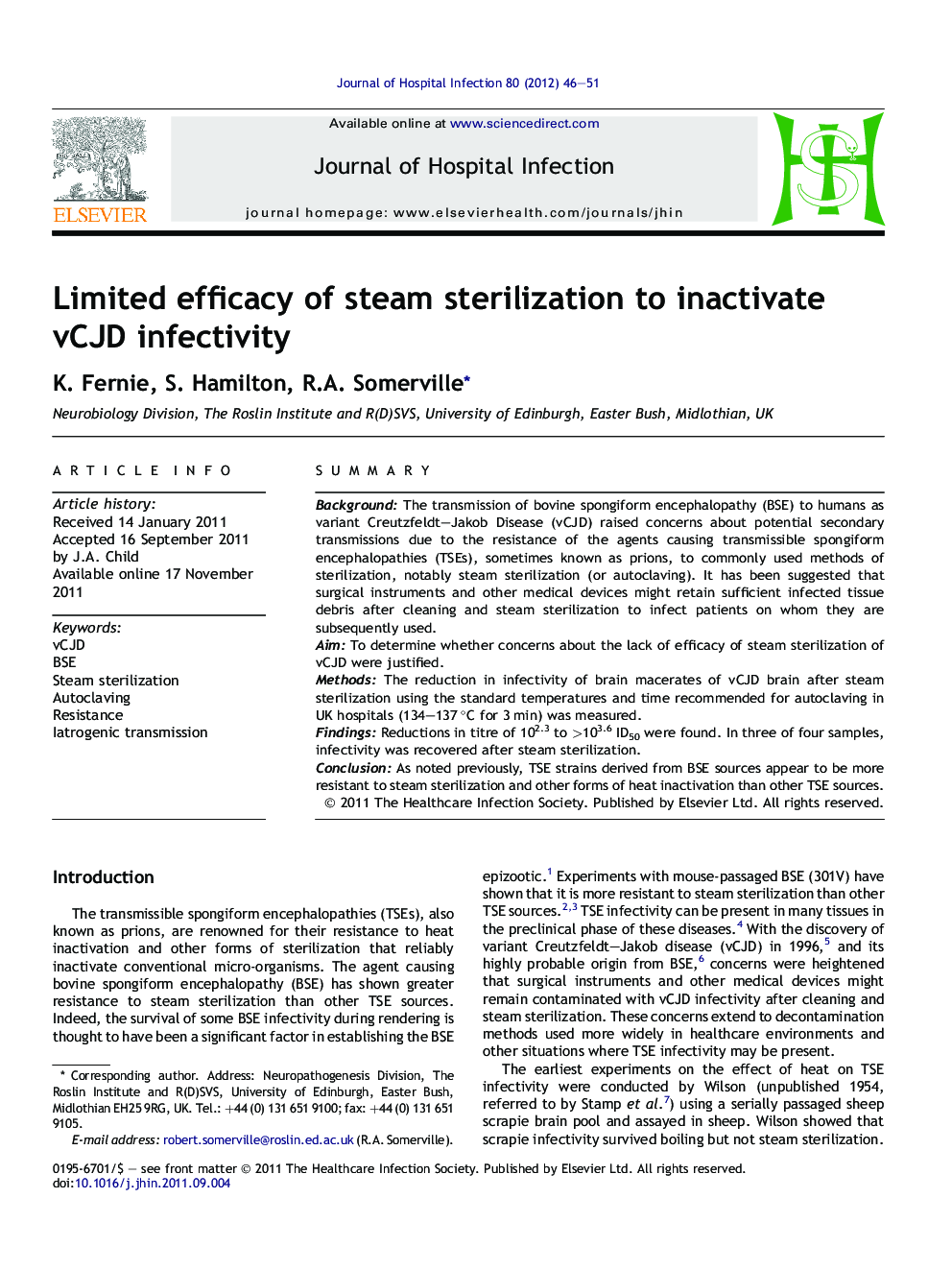| کد مقاله | کد نشریه | سال انتشار | مقاله انگلیسی | نسخه تمام متن |
|---|---|---|---|---|
| 3372027 | 1219241 | 2012 | 6 صفحه PDF | دانلود رایگان |

SummaryBackgroundThe transmission of bovine spongiform encephalopathy (BSE) to humans as variant Creutzfeldt–Jakob Disease (vCJD) raised concerns about potential secondary transmissions due to the resistance of the agents causing transmissible spongiform encephalopathies (TSEs), sometimes known as prions, to commonly used methods of sterilization, notably steam sterilization (or autoclaving). It has been suggested that surgical instruments and other medical devices might retain sufficient infected tissue debris after cleaning and steam sterilization to infect patients on whom they are subsequently used.AimTo determine whether concerns about the lack of efficacy of steam sterilization of vCJD were justified.MethodsThe reduction in infectivity of brain macerates of vCJD brain after steam sterilization using the standard temperatures and time recommended for autoclaving in UK hospitals (134–137 °C for 3 min) was measured.FindingsReductions in titre of 102.3 to >103.6 ID50 were found. In three of four samples, infectivity was recovered after steam sterilization.ConclusionAs noted previously, TSE strains derived from BSE sources appear to be more resistant to steam sterilization and other forms of heat inactivation than other TSE sources.
Journal: Journal of Hospital Infection - Volume 80, Issue 1, January 2012, Pages 46–51